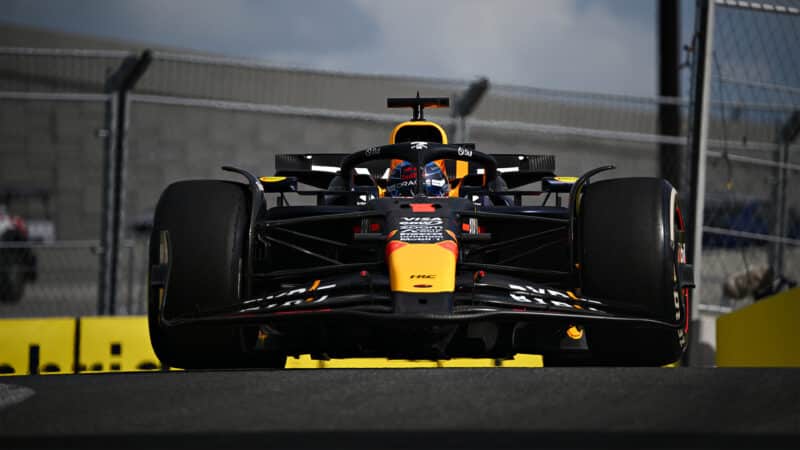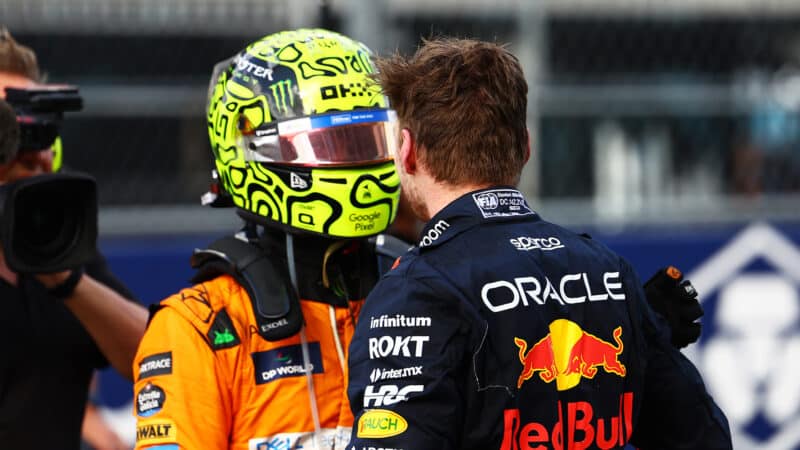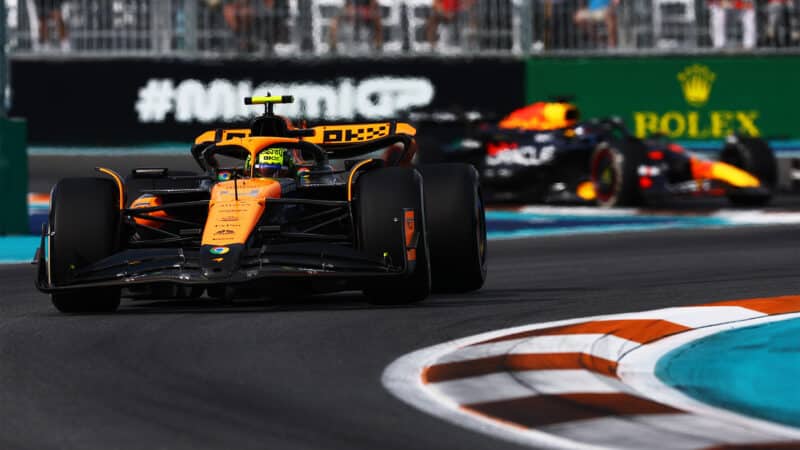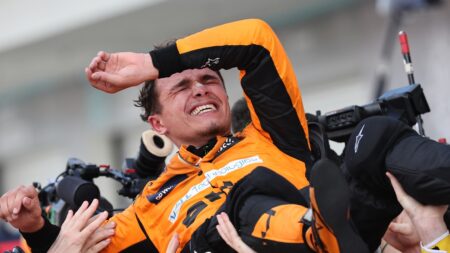It was that combination of searing pace and lower tyre consumption which made the McLaren look so good. It was that combination which meant he hadn’t yet pitted when the safety car came out and his rivals all had.
Looking at the respective on-boards of Verstappen and Norris even before the bollard incident, the McLaren is visibly a nicer drive. Verstappen is having to wrestle with the car on entry, particularly through Turn 7-8. But the McLaren is also surer-footed on entry to Turns 1, 11 and 17, the rear helping Norris to float the car to the apex in places where Verstappen is still manhandling the steering. Seeing this comparison it’s easy to understand why the McLaren was taking so much less energy out of its tyres. Its progressive rotation allowed Norris to achieve a beautiful fluidity and flow.
Verstappen was told by his engineer of the lap times Norris was pumping out on his old mediums. He later described them as ‘insane’ and acknowledged that he could not have matched them, even without damage.

Max Verstappen pilots ailing Red Bull in Miami
Red Bull
There’s little doubt that Norris’s McLaren was the fastest car in the race. Had it started at the front, it would likely have stayed there. But it had qualified only fifth, 0.35sec slower than Verstappen’s pole. Qualifying was on the soft tyre, whereas pretty much everyone’s race was done on the medium/hard combination. The McLaren did not like the soft tyre, but absolutely flew on the medium and hard. Hence the contrast between its competitiveness in qualifying and the race.
In sprint qualifying on Friday, with everyone required to do SQ1 and SQ2 on the medium and SQ3 on the soft, Norris was respectively P1, P1 and P9, (his medium time in SQ2 faster than Verstappen’s soft-tyred pole in SQ3). He’d got the car better attuned to the soft by GP qualifying a day later but only to the tune of that 0.35sec deficit. It could well be that the set-up which worked against it on the soft was what brought it its advantage on the harder tyres. The McLaren’s understeer on the soft was replaced by that nice progressive rotation. In the race Verstappen was reporting oversteer in the slower corners and understeer in the faster ones. On the softs in qualifying it had less slow corner understeer than the McLaren.
What we seemed to be witnessing at Miami was a Red Bull not quite in its sweet spot against a new McLaren which, in the race at least, was absolutely in its happy place. Although Red Bull still qualified on pole, its advantage over almost every other car was smaller than its seasonal average up to that point. So how might that translate to subsequent races? That is the big intrigue. Especially so as Ferrari has been making very positive noises about the upgrade which will be making its debut at Imola next weekend.
Last weekend Verstappen had just one upgraded McLaren to worry about. Next time out there will be two, plus two upgraded Ferraris. Has Norris just broken the dam around the Verstappen dominance? Or was it just a freak of circumstance?




